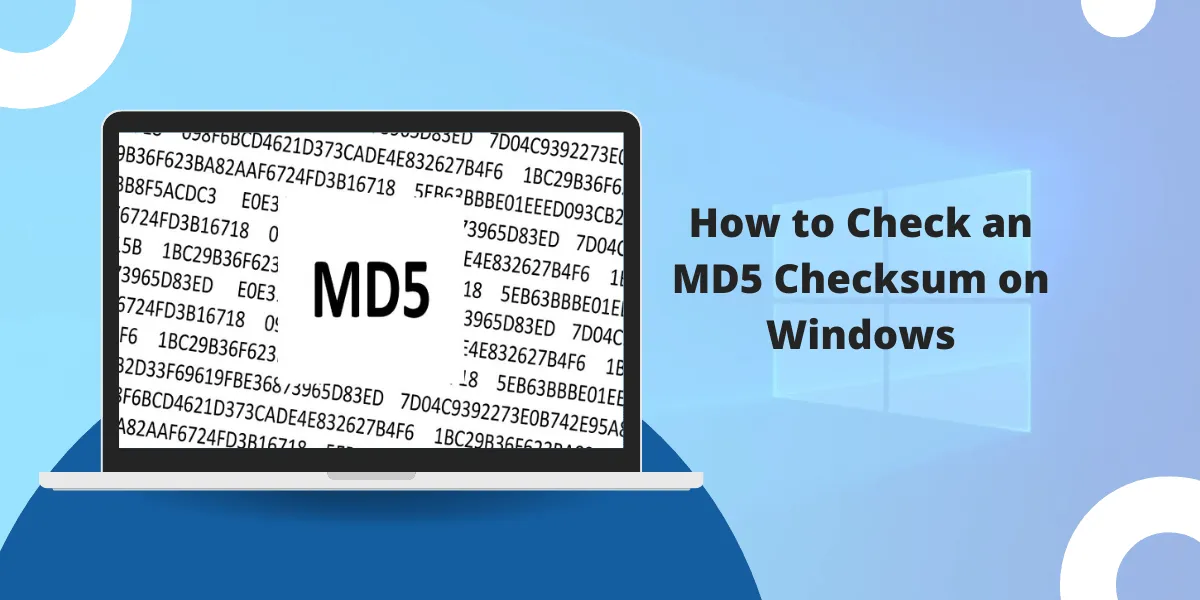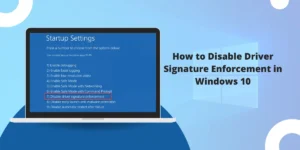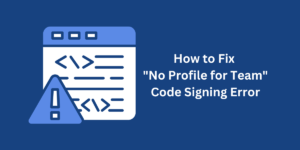Getting Started with MD5 Checksum
An MD5 checksum is a unique string of letters and numbers that serves as a digital fingerprint for a file. You can use it to verify a file’s integrity and authenticity by comparing its checksum value with the original. Learning how to Check MD5 Checksum on Windows is easy and can ensure your downloaded files are complete and uncorrupted.
This comprehensive guide will take you through everything you need to know about MD5 hashes and how to Check MD5 Checksum on Windows using various methods.
Key Takeaways
- An MD5 checksum is a 128-bit value that acts as a unique identifier for a file. It can verify file integrity and authenticity.
- You can check an MD5 hash on Windows using tools like the Microsoft File Checksum Integrity Verifier, PowerShell, and third-party software.
- To check a hash, calculate the MD5 value of your downloaded file and compare it against the original checksum provided.
- Matching hash values indicate the file has not been modified or corrupted during transfer.
- Checking MD5 hashes ensures you have complete, untampered downloads of files like software installers and ISO disc images.
What is an MD5 Checksum and Why Use It?
An MD5 checksum, also known as an MD5 hash value or just MD5 hash, is a 128-bit alphanumeric string calculated from a file’s binary content. The MD5 algorithm processes the file’s data and generates a distinct checksum value that can act like a fingerprint for that file.
Key Facts about MD5 Checksums
- The 128-bit MD5 hash produces a 32-character hexadecimal string unique to the input data. Even a small change to a file will drastically change its MD5 value.
- Each file should have a different MD5 hash if they are identical in binary data. There is an infinitesimally small chance of two different files producing the same MD5 value (known as a collision).
- MD5 hashes are one-way cryptographic functions. You cannot reverse an MD5 back to the original file.
- Anyone can easily generate MD5 checksums for files using common tools and utilities.
- MD5 remains a popular and reliable way to verify data integrity despite some cryptographic weaknesses in the algorithm.
The main use case for MD5 hashes is to check the integrity and authenticity of downloaded files. By comparing a file’s generated MD5 against the original value provided, you can ensure:
- Integrity: The file has not been modified, corrupted, or altered after being created. The data is intact.
- Authenticity: The file you received came from the stated source and has not been tampered with or replaced.
For example, software developers post MD5 hashes so users can verify the installer downloads are complete and official. People distributing Linux ISO images often include the MD5 hash to check whether the ISO file contents are original or unmodified.
Other uses of MD5 include verifying cached files, detecting duplicate data, and providing a checksum in data transmission protocols.
How to Generate an MD5 Checksum Value in Windows
To check a file’s MD5 hash, you first need to calculate the checksum value on your end to compare it with the original.
Here are some easy ways to generate MD5 hashes in Windows:
Using Microsoft File Checksum Integrity Verifier
Microsoft provides the small utility tool File Checksum Integrity Verifier (FCIV) to generate and validate checksums for files.
To use it:
- Download and install FCIV if you don’t already have it.
- Right-click the file and select “Generate File Checksum” from the context menu.
- Choose MD5 as the checksum algorithm.
- FCIV will calculate and display the file’s MD5 hash value.
- You can also provide the MD5 value from the source and use FCIV to validate the hash matches.
From File Explorer’s Properties
You can view a file’s MD5 hash in the Properties window:
- Right-click the file in Explorer and choose Properties.
- Switch to the Details tab.
- Scroll down and look for the MD5 value.
Generate MD5 Hash Using PowerShell
To generate the MD5 hash in PowerShell:
- Open a PowerShell window.
- Run the command Get-FileHash -Path [file] -Algorithm MD5.
- Replace [file] with the path to your file.
- The command will output the 32-character MD5 hash.
Generate MD5 Using Command Prompt
In Command Prompt, use the certUtil -hashfile command:
- Open Command Prompt.
- Type certUtil -hashfile [file] MD5.
- Replace [file] with your file’s path.
- The MD5 checksum will be displayed.
Step-by-Step Guide for Comparing the Generated MD5 Hash
Once you have the MD5 checksum from your downloaded file, you can verify it matches the original value provided by the file source.
Here are the steps:
- Locate the legitimate MD5 hash value to compare against. The original website, readme file, developer page, or download source should provide it.
- Generate an MD5 hash from your downloaded file using one of the methods described above.
- Compare the two MD5 values: they should match exactly, character for character.
- If the checksums are identical, the downloaded file’s contents are proven to be complete and unmodified, and you have an authentic copy.
- If the hashes don’t match, then the file has likely been changed, corrupted, or tampered with. Delete it and download the file again to recheck the MD5 value.
- You can also scan for malware if the hashes do not match to be safe. The discrepancy indicates untrustworthy or forged files.
Matching MD5 hashes gives you confidence in the integrity and authenticity of your downloaded files. This verification is useful for installing software, checking disk images, examining sensitive data, and other situations where file accuracy matters.
Why MD5 Hashes May Not Match
If the generated MD5 and original value do not match, there are a few common reasons:
- File corruption: Parts of the file were lost or altered during download due to network errors. This changes the binary data used to calculate the MD5 hash.
- Tampering: The file has been intentionally modified by a third party to inject malicious code or hide changes.
- Wrong original: The MD5 you are comparing against is not the file’s official checksum. Double-check that you have the verified hash.
- Different versions: The provider may have updated or changed the file, so old MD5 hashes won’t match the new version.
- Collisions: There is an infinitesimally small chance that two files produce the same MD5 hash. But unlikely.
- Wrong file: You may be checking the MD5 of a similar but incorrect file. Confirm it’s the original downloaded file.
If you are certain, you have the right original hash, a mismatch almost always indicates a corrupted or tampered file. Delete it and re-download it to generate a new MD5.
MD5 Checksum Use Cases and Examples
Here are some common situations where using MD5 hashes to check file integrity is very useful:
- Software Downloads: Software developers often provide MD5 hashes to users alongside installers so they can verify the correct download. For example, when downloading video games or applications like web browsers.
- ISO Images: You typically publish MD5 hashes with disk images of operating system ISOs to check for errors. This is critical when downloading Linux ISOs or Windows ISO disk images.
- Sensitive Data: Files containing private data like financial records or personal information should be checked to ensure they remain unmodified.
- Drivers and Firmware: Device manufacturers release MD5 hashes so users can confirm the authenticity of drivers and firmware binary files before installation.
- User-Generated Content: Websites that host user uploads may use MD5 hashes to detect duplicate files or verify assets.
- File Storage and Transfer: Stored or transmitted files can quickly be checked against a previously generated MD5 value to verify their integrity.
- Caches and Archives: Archived files and cached downloads can be spot-checked periodically using MD5 to ensure they don’t become corrupted over time.
MD5 Hashing Limitations and Alternatives
While still very useful, MD5 hashes have some limitations:
- MD5 is no longer considered cryptographically secure. Researchers have demonstrated collisions and weaknesses that allow forged MD5 values.
- Faster CPUs and GPUs can now brute force MD5 hashes, reducing their effectiveness against intentional tampering.
- 128-bit hashes are less robust than larger 256-bit or 512-bit algorithms.
Due to these flaws, security-conscious users may want to consider stronger modern hashing algorithms:
- SHA-256 is widely adopted and trusted, producing a much longer 256-bit hash value.
- SHA-512 is even more robust with a 512-bit digest size.
- Blake2, SHA-3, and WHIRLPOOL also avoid MD5’s flaws.
How to Check MD5 Hash on Windows: Step-by-Step Walkthrough
Here is a step-by-step walkthrough to clearly demonstrate verifying an MD5 checksum on Windows:
- Download the file: Let’s say you download a software application’s setup installer from its official website.
- Note original MD5: On the download page, the developer has provided the MD5 hash value of the installer file for verification. You make a note of this original hash: ed7002a714a1a0d6cad8ff4c425d792b
- Generate MD5 on your end: After downloading to your Windows PC, you right-click the installer setup.exe file and choose ‘Generate file checksum.’
- Select MD5: In FCIV, select MD5 as the checksum algorithm. Click Create.
- Compare values: FCIV calculates and displays the MD5 hash of the downloaded file: ed7002a714a1a0d6cad8ff4c425d792b
- Verify match: The two MD5 hash values exactly match, proving the installer file is authentic and unmodified.
- Proceed with confidence: Since the file integrity has been verified, you can now run the installer safely, knowing it is genuine and error-free.
Final Thoughts
Verifying MD5 checksums on Windows is a straightforward process that ensures your downloaded files are intact and uncorrupted. By comparing the MD5 hash values, you can confirm that the file contents match the original. This simple checksum verification gives you peace of mind that your downloaded file has not been tampered with or corrupted during transfer.
While MD5 has some limitations in terms of collision resistance, it remains a quick and easy way to check file integrity on Windows. Following the simple steps outlined, even beginners can learn to generate and compare MD5 checksums.
FAQs about MD5 Hashes in Windows
Here are some frequently asked questions about using MD5 checksums on Windows systems:
What is the best software tool for generating MD5 hashes on Windows?
Microsoft’s FCIV utility and PowerShell are good built-in tools. Third-party options like QuickHash GUI also provide user-friendly MD5 generation.
Can I generate an MD5 checksum for a folder or drive?
No, MD5 hashes are calculated from a file’s complete binary contents. They cannot be created for folders, partitions, or disks.
Does turning off a virus scanner improve MD5 generation performance?
Yes, antivirus software can slow down MD5 generation. Excluding the file or pausing your antivirus may speed up checksum calculation.
How do I verify a large download with MD5 without recalculating the entire hash?
Use a utility like HashCheck Shell Extension, which can incrementally update the MD5 value as part of a large file download.
Can MD5 hash detect if files are infected with malware or viruses?
No, MD5 only verifies if a file’s binary contents match the original. To scan for malware, use dedicated antivirus software.
What hash algorithm does Windows use for NTFS file integrity checking?
NTFS uses CRC-32 hashes, not MD5, for its internal file integrity checks on system files.

Priya Mervana
 Verified Web Security Experts
Verified Web Security Experts
Priya Mervana is working at SSLInsights.com as a web security expert with over 10 years of experience writing about encryption, SSL certificates, and online privacy. She aims to make complex security topics easily understandable for everyday internet users.



